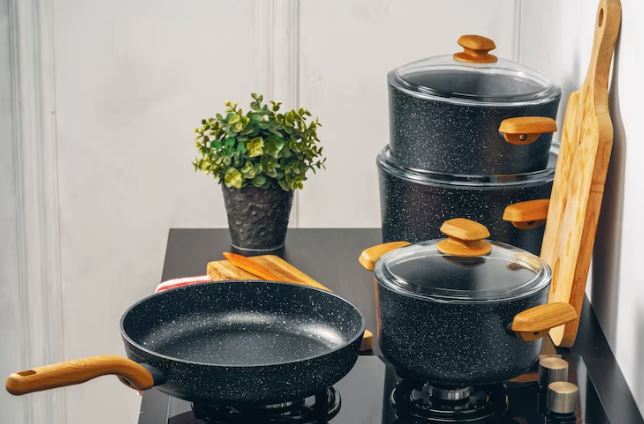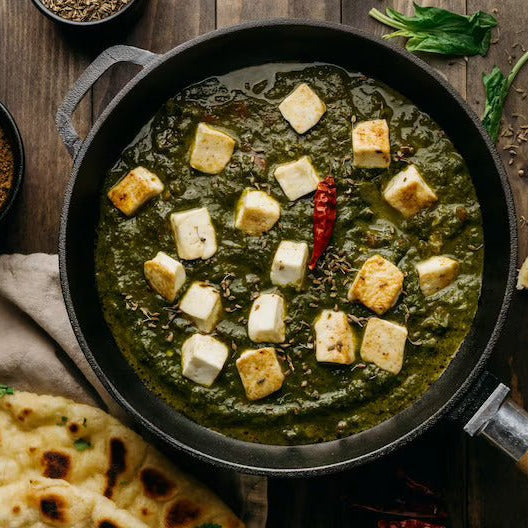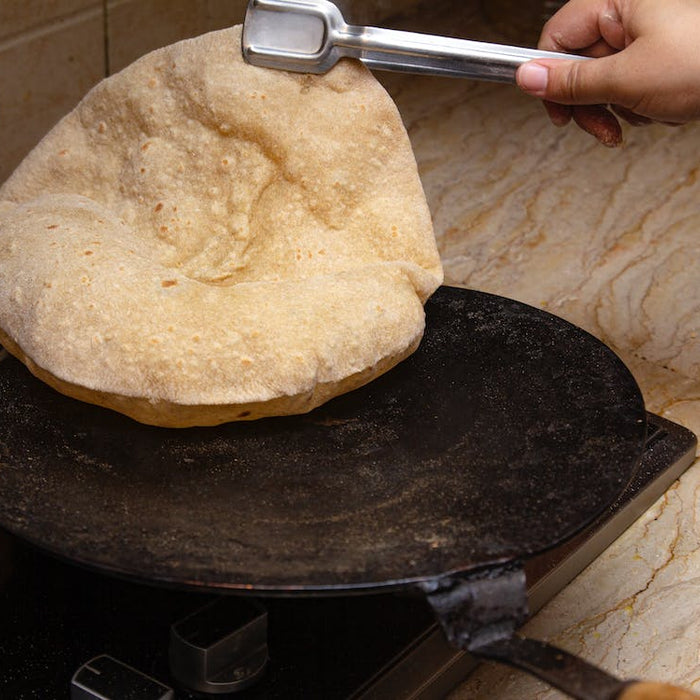
Pots and Pans Manufacturers in India of Cookware for Indian Kitchens
In the heart of every Indian kitchen lies a diverse ensemble of pots and pans, each with a unique purpose and history. From sizzling spices to slow-cooked stews, these essential cooking companions are the unsung heroes behind the aromatic symphony of flavors that characterize Indian cuisine. Let's delve into the fascinating world of pots and pans, uncovering their significance, traditional craftsmanship, and the crucial role they play in the art of Indian cooking.
Variety in Design: From Tadka Pans to Biryani Handis
Indian cookware reflects the rich cultural tapestry of the subcontinent, boasting a wide array of designs tailored to specific cooking techniques. Tadka pans, also known as seasoning pans, are small and shallow, perfect for infusing spices into hot oil. The iconic handi, on the other hand, is a deep, wide-mouthed pot ideal for slow-cooking flavorful biryanis and hearty stews.
Materials Matter: Brass, Copper, and Iron
Traditionally, Indian cookware has been crafted from materials like brass, copper, and iron, each imparting a unique character to the dishes prepared. Brass utensils are cherished for their even heat distribution, while copper vessels are prized for their rapid response to temperature changes. Iron pans, commonly used for dosa and roti preparation, add an earthy touch to the culinary process.
Artistry in Craftsmanship: The Handcrafted Legacy
One of the distinguishing features of Indian pots and pans is the emphasis on craftsmanship. Many utensils are meticulously handcrafted by skilled artisans, passing down techniques through generations. The intricate designs and engravings on brass and copper vessels not only serve a functional purpose but also make these items a visual delight in the kitchen.
Culinary Traditions: The Role of Each Vessel
In the traditional Indian kitchen, each pot and pan has a designated role. The karahi, a deep, wok-like vessel, is perfect for frying and preparing curries. The idli steamer, typically made of stainless steel or aluminum, is tailored for crafting the beloved, fluffy South Indian idlis. Tawa, the flat griddle, is indispensable for making chapatis and dosas.
Evolution of Cookware: From Clay to Non-Stick
While traditional cookware holds a special place, the modern Indian kitchen has witnessed the advent of innovative materials like non-stick coatings and aluminum alloys. These materials offer convenience and ease of cleaning, catering to the fast-paced lifestyle of many households today.
Maintenance and Rituals: Nurturing the Culinary Companions
Maintaining pots and pans in Indian households often involves a blend of tradition and practicality. From the seasoning of iron utensils to the occasional tamarind scrub for brass vessels, these rituals not only ensure longevity but also contribute to the distinct flavors developed over time.
Challenges and Solutions: Balancing Tradition and Modernity
While traditional cookware remains cherished, the challenges of modern life sometimes necessitate practical solutions. The emergence of non-stick pans, induction-friendly vessels, and multi-cookers reflects the adaptability of Indian kitchens to evolving culinary needs.
In Conclusion: The Melody of Pots and Pans in Indian Cuisine
The pots and pans of India are not mere kitchen tools; they are vessels that carry the heritage, traditions, and stories of generations. As India continues to evolve, so does its culinary landscape, blending the time-honored artistry of traditional cookware with the efficiency and convenience demanded by contemporary life. In every clang, sizzle, and simmer, the pots and pans of India continue to orchestrate the symphony of flavors that define this vibrant culinary culture.
Featured collection
-
Original price - Original priceOriginal price Rs. 19.99Rs. 19.99-Current price Rs. 19.99
Product title
Original price - Original priceOriginal price Rs. 19.99Rs. 19.99-Current price Rs. 19.99 -
Original price - Original priceOriginal price Rs. 19.99Rs. 19.99-Current price Rs. 19.99
Product title
Original price - Original priceOriginal price Rs. 19.99Rs. 19.99-Current price Rs. 19.99 -
Original price - Original priceOriginal price Rs. 19.99Rs. 19.99-Current price Rs. 19.99
Product title
Original price - Original priceOriginal price Rs. 19.99Rs. 19.99-Current price Rs. 19.99 -
Original price - Original priceOriginal price Rs. 19.99Rs. 19.99-Current price Rs. 19.99
Product title
Original price - Original priceOriginal price Rs. 19.99Rs. 19.99-Current price Rs. 19.99 -
Original price - Original priceOriginal price Rs. 19.99Rs. 19.99-Current price Rs. 19.99
Product title
Original price - Original priceOriginal price Rs. 19.99Rs. 19.99-Current price Rs. 19.99
Blog posts
-
-

What is Karahi or Kadahi? Exploring Its Best Use in 2024 | Non Stick
The kadai or karahi holds a special place, when it comes to Indian cooking,choose MACclite kadai cookware for a healthier and more enjoyable cooking experience.Read now -

Best Tawa for Roti 2024 - Guide to Choosing the Best Iron Tawa for Your Family
The roti tawa is the right tool to achieve the ideal texture and taste. Finding the perfect roti tawa for your family can be both rewarding and challenging in 2024 due to the many options available.Read now


